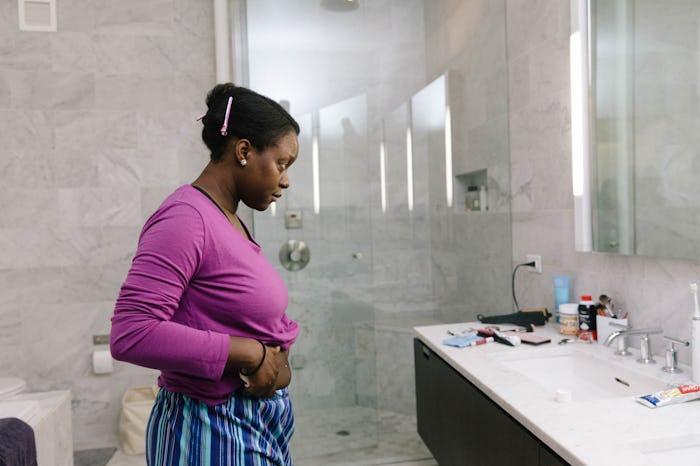Motherhood changes you in so many ways, body and soul. You learn you have an incredible capacity for love and that you can spray milk 3 feet from your boobs. Basically, your body may change in ways you can't anticipate. You might also be wondering how a c-section will change your belly, because you've heard it's significant.
Almost one third of all births in the United States are done via C-section. 32 percent, to be exact, according to the Centers for Disease Control and Prevention (CDC). If you've been told you need to have one, you're not alone, but you may be worried not only about the procedure, but also about the recovery, and the long-term effects of having a C-section. As is the case for every birth, vaginal or otherwise, each birth is as unique as the mother who is experiencing it. But, in general, the OB-GYN makes a "bikini cut incision" low on the abdomen from which to evacuate your little womb raider into this world, noted The March of Dimes. Because there are several layers of viscera and muscle to deal with, the closing-up process can be difficult. The number of staples and stitches and the location of them vary for each woman, but that's just basic healing and cosmetics. When you're concerned about how a C-section will change your belly, you're probably thinking next year, not next week.
I spoke to Rivkah Wohl, exercise physiologist and recipient of seven C-sections resulting in nine babies, to get the answers. Wohl tells Romper, "C-sections fundamentally change the muscular structure of your abdomen. When the doctor cuts through those muscles, it's like cutting through the chain of communication in the muscle from one side to the other, and it never really goes back to fully normal functioning again. But that's the case in any surgery, not just a C-section."
Wohl says that this lack of communication is the reason for what some women refer to as "the C-section pooch" — that little bulge caused by your muscles' miscommunication. It's like when you go to Starbucks on a busy day, and you order an unsweetened green iced tea with one scoop of refresher berries and you get an Arnold Palmer.
You're also probably going to be tender for a long time. Think months, not weeks, says Wohl. "And you will probably feel it tug forever." She says that she's had clients in their 40s and 50s who are decades out from having children and still feel the tug. That's why its paramount that you follow your doctor's instructions and work slowly back into your exercise routine, being extra gentle with your body, Wohl adds. "You just carried a baby for months, and then it was delivered via surgery. Cut yourself some slack."
If you're concerned with aesthetics, Wohl says that with a healthy diet and a good cardio and weight routine, you should be able to get it in pretty good shape. But remember, no matter what, your body is amazing. "I had to work at it a lot and even though it is still a tiny bit poochy, my belly carried my babies, and I think that's pretty awesome," Wohl says. I think it's pretty amazing, too. Your C-section may change your belly, but it also changed your whole life. Both are worth celebrating.
